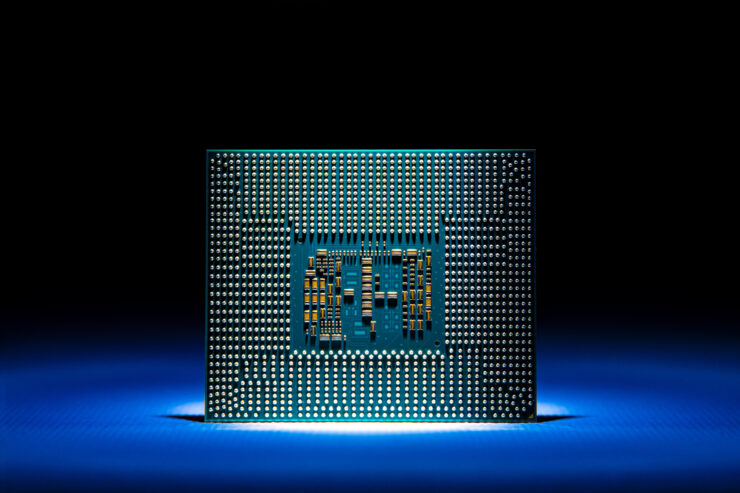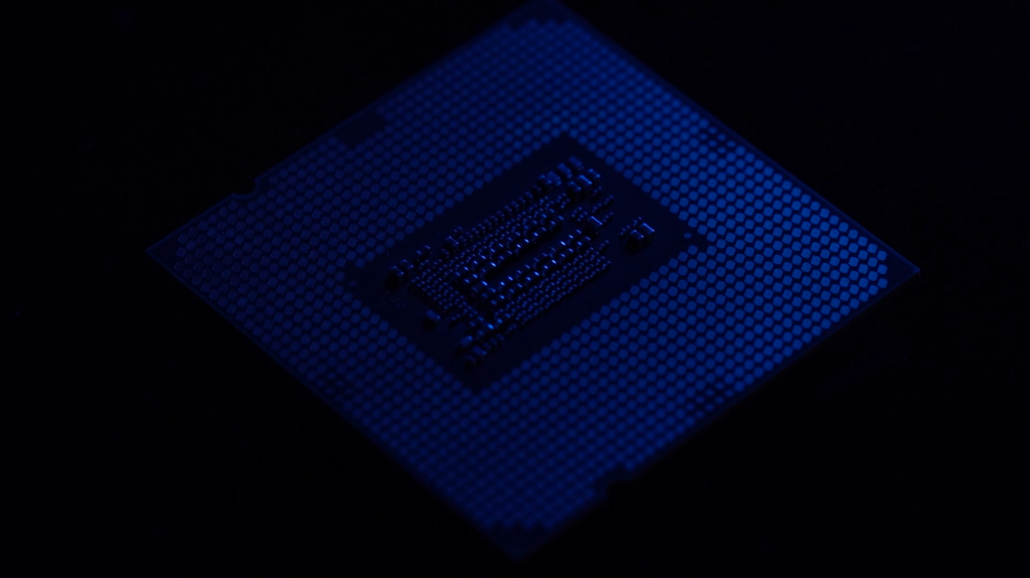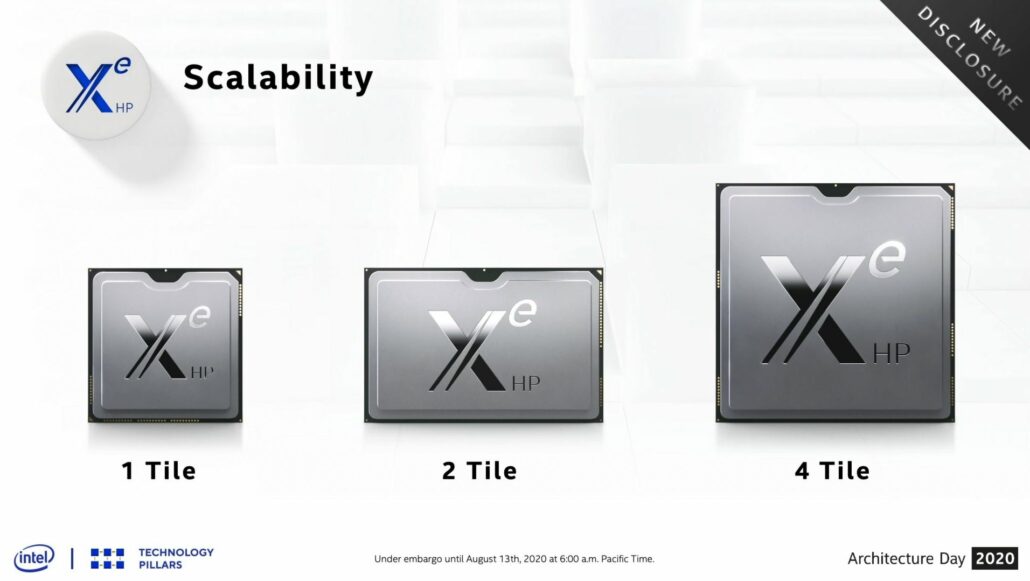
Building on the foundation of the integrated Intel Iris Xe graphics in 11th Gen Intel Core mobile processors and based on the same Xe-LP microarchitecture, Intel Iris Xe MAX is the company’s first Xe-based discrete graphics processing unit (GPU). It addresses an emerging need for content creation performance in thin-and-light laptops. (Credit: Intel Corporation)
Several Intel next-generation products which include CPUs and GPUs have been spotted within GPU drivers. The leaked products were spotted by Reddit user, stblr, who had previously posted the specifications of AMD’s RDNA 2 GPUs, as per Videocardz. The new products include the CPU lineup codenamed Lunar Lake and two Gen 13 powered Xe GPUs.
Intel’s Next-Gen Lunar Lake Desktop CPUs & Gen 13 Powered Xe DG3 & Jupiter Sound GPUs Spotted
The Redditor mentions that these come from within the latest GPU drivers and all information was decoded from them. The details have been unveiled just days after Intel announced its first Xe GPU based discrete graphics chip known as Intel Xe Max.
Intel Lunar Lake Desktop CPUs
The first thing to talk about is the Intel Lunar Lake lineup of processors. There’s no mention of Lunar Lake up till now and it was briefly mentioned by Moore’s Law is Dead but no details were disclosed. The Lunar Lake CPUs will most likely replace the Meteor Lake lineup and hence fall in Intel’s 14th Gen branding unless Intel decides to change that by then since we are talking at least two or three years from now (2022-2023).

What’s interesting is that Lunar Lake is listed with Gen 12.9 graphics. This suggests that we are looking at a refined variant of the Gen 12 architecture rather than Gen 13 since that starts with other two products that we will talk about here. Alder Lake Desktop CPUs are listed with 12.2 & Meteor Lake are latest with 12.722 Generation codenames.
Intel Desktop CPU Generations Comparison:
| Intel CPU Family | Processor Process | Processors Cores (Max) | TDPs | Platform Chipset | Platform | Memory Support | PCIe Support | Launch |
|---|---|---|---|---|---|---|---|---|
| Sandy Bridge (2nd Gen) | 32nm | 4/8 | 35-95W | 6-Series | LGA 1155 | DDR3 | PCIe Gen 2.0 | 2011 |
| Ivy Bridge (3rd Gen) | 22nm | 4/8 | 35-77W | 7-Series | LGA 1155 | DDR3 | PCIe Gen 3.0 | 2012 |
| Haswell (4th Gen) | 22nm | 4/8 | 35-84W | 8-Series | LGA 1150 | DDR3 | PCIe Gen 3.0 | 2013-2014 |
| Broadwell (5th Gen) | 14nm | 4/8 | 65-65W | 9-Series | LGA 1150 | DDR3 | PCIe Gen 3.0 | 2015 |
| Skylake (6th Gen) | 14nm | 4/8 | 35-91W | 100-Series | LGA 1151 | DDR4 | PCIe Gen 3.0 | 2015 |
| Kaby Lake (7th Gen) | 14nm | 4/8 | 35-91W | 200-Series | LGA 1151 | DDR4 | PCIe Gen 3.0 | 2017 |
| Coffee Lake (8th Gen) | 14nm | 6/12 | 35-95W | 300-Series | LGA 1151 | DDR4 | PCIe Gen 3.0 | 2017 |
| Coffee Lake (9th Gen) | 14nm | 8/16 | 35-95W | 300-Series | LGA 1151 | DDR4 | PCIe Gen 3.0 | 2018 |
| Comet Lake (10th Gen) | 14nm | 10/20 | 35-125W | 400-Series | LGA 1200 | DDR4 | PCIe Gen 3.0 | 2020 |
| Rocket Lake (11th Gen) | 14nm | 8/16 | TBA | 500-Series | LGA 1200 | DDR4 | PCIe Gen 4.0 | 2021 |
| Alder Lake (12th Gen) | 10nm? | 16/24? | TBA | 600 Series? | LGA 1700 | DDR5 | PCIe Gen 5.0? | 2021 |
| Meteor Lake (13th Gen) | 7nm? | TBA | TBA | 700 Series? | LGA 1700 | DDR5 | PCIe Gen 5.0? | 2022? |
| Lunar Lake (14th Gen) | TBA | TBA | TBA | 800 Series? | TBA | DDR5 | PCIe Gen 5.0? | 2023? |
There’s no telling if Intel will still be supporting its LGA 1700 platform by the time Lunar Lake is launched. Currently, Intel has kept socket and platform compatibility alive for at least two CPU generations but that might change in the future due to increased competition from AMD and its Ryzen (AM5) platform.
Intel Jupiter Sound Xe GPUs
On the GPU side, we first have Jupiter Sound which is a name which we have heard before and is supposed to be the successor to the Intel Arctic Sound line of chips. The Intel Arctic Sound is the GPU powering Intel’s Xe-HP lineup which is aimed at datacenters and workstations. The current lineup is based on the Gen 12 Xe architecture but Jupiter Sound is listed as a Gen 13 Xe architecture based design.

Just like Intel’s Xe-HP (1st Gen), the Xe-HP (2nd Gen) lineup is going to feature a tiled MCM designs with multiple chiplets featuring 1000s of EUs and tens of thousands of cores. The lineup will use an advanced SuperFin process node but Intel is also exploring external fab options to help produce their next-generation GPUs. From the looks of it, the high-performance lineup at least will be built on Intel’s own internal fabrication process but that could change in the future.
| GPU Family | Intel Xe-LP (1st Gen) | Intel Xe-HPG (1st Gen) | Intel Xe-HP (1st Gen) | Intel Xe-HP (2nd Gen) | Intel Xe-HPC (1st Gen) |
|---|---|---|---|---|---|
| GPU Segment | Entry-Level (Integrated + Discrete) | Mainstream / High-End Gaming (Discrete) | Datacenter & Workstation | Datacenter & Workstation | High Performance Computing |
| GPU Gen | Gen 12 | Gen 12 | Gen 12 | Gen 13 | Gen 12 |
| Process Node | Intel 10nm SuperFin | External Foundry | Intel 10nm SuperFin | TBA | Intel 10nm SuperFin External Foundry |
| GPU Products | Tiger Lake DG1/SG1 Cards |
DG2 GPUs | Arctic Sound | Jupiter Sound | Ponte Vecchio |
| Specs / Design | 96 EUs / 1 Tile /1 GPU | 512 EUs / 1 Tile / 1 GPU | 2048 EUs / 4 Tiles Per GPU | TBA | 8192 EUs / 16 Tiles per GPU |
| Memory Subsystem | LPDDR4/GDDR6 | GDDR6 | HBM2e | TBA | HBM2e |
| Launch | 2020 | 2021 | 2021 | 2022? | 2021-2022 |
Intel DG3 Xe GPUs
Finally, there’s talk about Intel’s DG3 Xe GPUs which will be based on the Gen 13 Xe graphics uarch. Now we can’t say for sure if DG3 will be a DG1 or a DG2 successor. The DG1 GPUs are entry-level chips which are primarily aimed at the mobility segment and do come in a few desktop variants but not intended for the consumer market. The DG2 GPU on the other hand will be part of the Xe-HPG lineup which is primarily built for the gaming desktop graphics card segment and launching in the coming year.
The Intel DG3 Xe GPUs would most likely launch in 2022 since we still aren’t sure when exactly in 2021 does Intel plan to launch its DG2 Xe GPUs. With that said, the DG3 Xe GPUs will offer better performance in all regards over their predecessors and with improved efficiency since Intel would have gained a lot of expertise in the discrete graphics department, especially for gamers, by then.
Gen12 and Gen13 summary (via stblr @ Reddit):
| Gen | Codename | Cores | Subslices | Memory |
|---|---|---|---|---|
| 12.1 | Tiger Lake UP3/UP4 (TGL-UP3/UP4) | 4 | 12 | UMA |
| 12.1 | DG1 | N/A | 12 | LPDDR4x |
| 12.1 | Rocket Lake S | 8 | 4 | UMA |
| 12.2 | Alder Lake S (ADL-S) | 8+8 | 4 | UMA |
| 12.2 | Alder Lake P (ADL-P) | 6+8 | 12 | UMA |
| 12.2 | Alder Lake M (ADL-M) | 2+8 | 12 | UMA |
| 12.5 | Arctic Sound (ATS) | N/A | 4 x 64 | HBM2E |
| 12.5 | Tiger Lake H (TGL-H) | 8 | 4 | UMA |
| 12.71 | DG2 | N/A | 64 | GDDR6 |
| 12.721 | Ponte Vecchio (PVC) | N/A | ? | HBM2E |
| 12.722 | Meteor Lake (MTL) | ? | ? | UMA |
| 12.9 | Lunar Lake (LNL) | ? | ? | UMA |
| 12.9 | ? (SYL) | ? | ? | UMA |
| 13 | Jupiter Sound (JPS) | N/A | ? | ? |
| 13 | DG3 | N/A | ? | ? |







More Stories
AMD Radeon RX 6800 XT “Big Navi” GPU Alleged 3DMark Benchmarks Leaked – Faster Than GeForce RTX 3080 at 4K, Slower In Port Royal Ray Tracing
AMD Ryzen 7 5800H 8 Core & 16 Thread Cezanne ‘Zen 3’ High-Performance CPU Shows Up, Early ES Chip With 3.2 GHz Clocks
BitFenix Announces Two New Cases, The Nova Mesh SE and the Nova Mesh SE TG